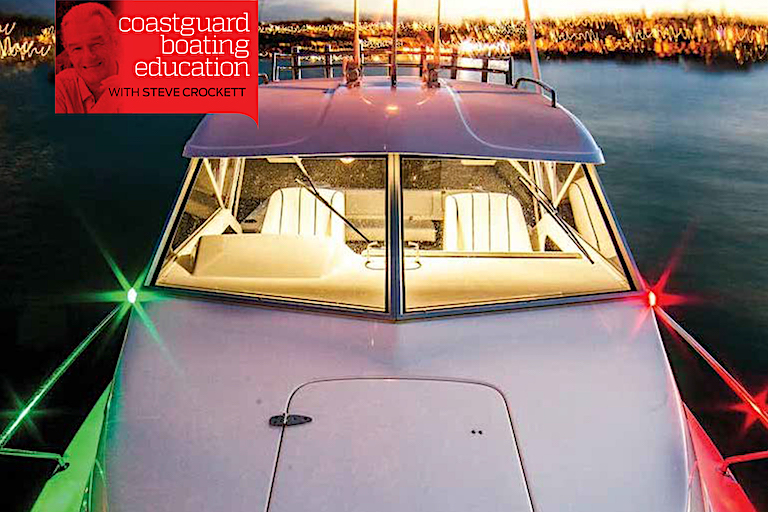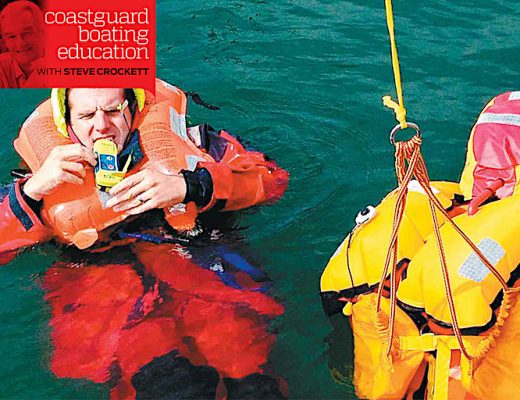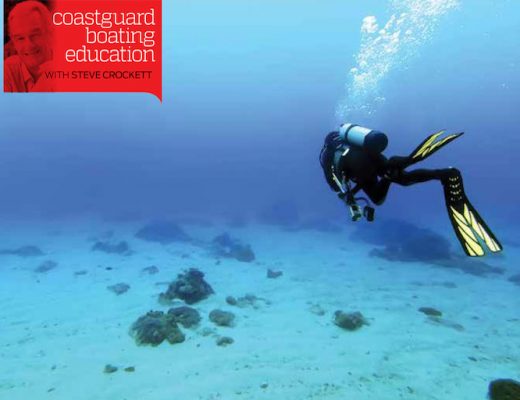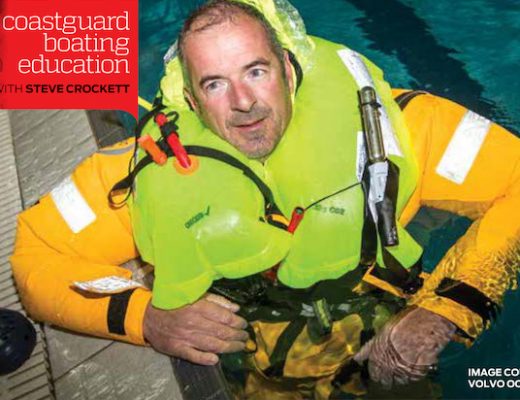KNOWING WHAT THE LIGHTS MEAN WILL KEEP YOU OUT OF DANGER
It’s an Autumn night – ‘starless and Bible-clack” Dylan Thomas would say. Our 12 metre yacht on a port tack fine reach is making an easy 7kt in a 15kt nor-easterly breeze. My eyes, constantly scanning the environment, detect a fixed green light low down, 45° on our port bow. The compass bearing is 026°M, increasing rapidly, whilst the range is decreasing slowly. Is there a risk of collision at this stage? No.
That assessment completed, I ask my crew of trainees to identify the vessel. Every one of the crew tells me that it is a “power-driven vessel (PDV] crossing from left to right. I ask them to tell me how they have determined that it is a PDV and what size they thought it may be. They suddenly realise that they have no idea of the size because the vessel is not displaying the lights for a PDV at all; it is displaying the lights of a sailing vessel (or the lights which may be displayed by a vessel less than seven metres in length under oars).
Their assumption was based on the observed speed of transit and [possibly] due to the high-pitched drone of the outboard motor. This observation then led to a question and answer session on lights to be displayed by different vessels at night or in conditions of restricted visibility.
So, when are lights to be displayed? Maritime Rule Part 22, section 2 is pretty straightforward: lights must be displayed at night or in restricted visibility.
But which lights? This is the part where many people are confused or ignorant.
Section 22.23 applies to “power-driven vessels underway”.What does that mean?
A vessel is considered to be underway when it is “not at anchor, or made fast to the shore, or aground”. This means that if you are ut there drift fishing, even though you are not “making way” you are considered to be “underway” and therefore must display the correct lights for a PDV.
The rules tell us that a PDV less than 50 metres in length must exhibit a masthead light forward, sidelights and a stern light. Note that a masthead light is not the all-round light at the top of a yacht mast. It is a white light which shows from directly ahead to a point 22.5° aft of the beam on either side of the vessel.
But what are the rules for smaller craft?
The rules make allowance for them in sub-rule (3):
Instead of exhibiting the lights prescribed in sub-rule (1), a power-driven vessel –
(a) of less than 12 metres in length may exhibit an all-round white light and sidelights; and
(b) of less than 7 metres in length, whose maximum speed does not exceed 7kt, may exhibit an all-round light and must, if practicable, exhibit sidelights.
Most common powerdriven recreational craft are capable of a speed greater than 7 knots and this means they must show, as a minimum, an all-round white light and side lights when underway. The rule also applies to the little inflatable dinghy you may use to transport your crew ashore during hours of darkness. You must have, as a minimum, a fixed all round white light on a pole. A torch or other signalling device does not fit these requirements – that’s only for a sailing vessel less than 7m in length, or a vessel under oars. As soon as you put a motor on any of these watercraft, the lighting requirements change.
So, when you decide to purchase that new powerboat, either from a broker or from an advertisement, check that it comes with all of the correct lights for the type. If it does not have a masthead light, a stern light, or an all-round white light, it does not meet the requirements of the rules and, if prosecuted, you may end up with a fine.
A Coastguard Boating Education Day Skipper or Boatmaster course will help you understand what vessels you’re seeing out on the water at night. See boatingeducation.org. nz for more information





No Comments